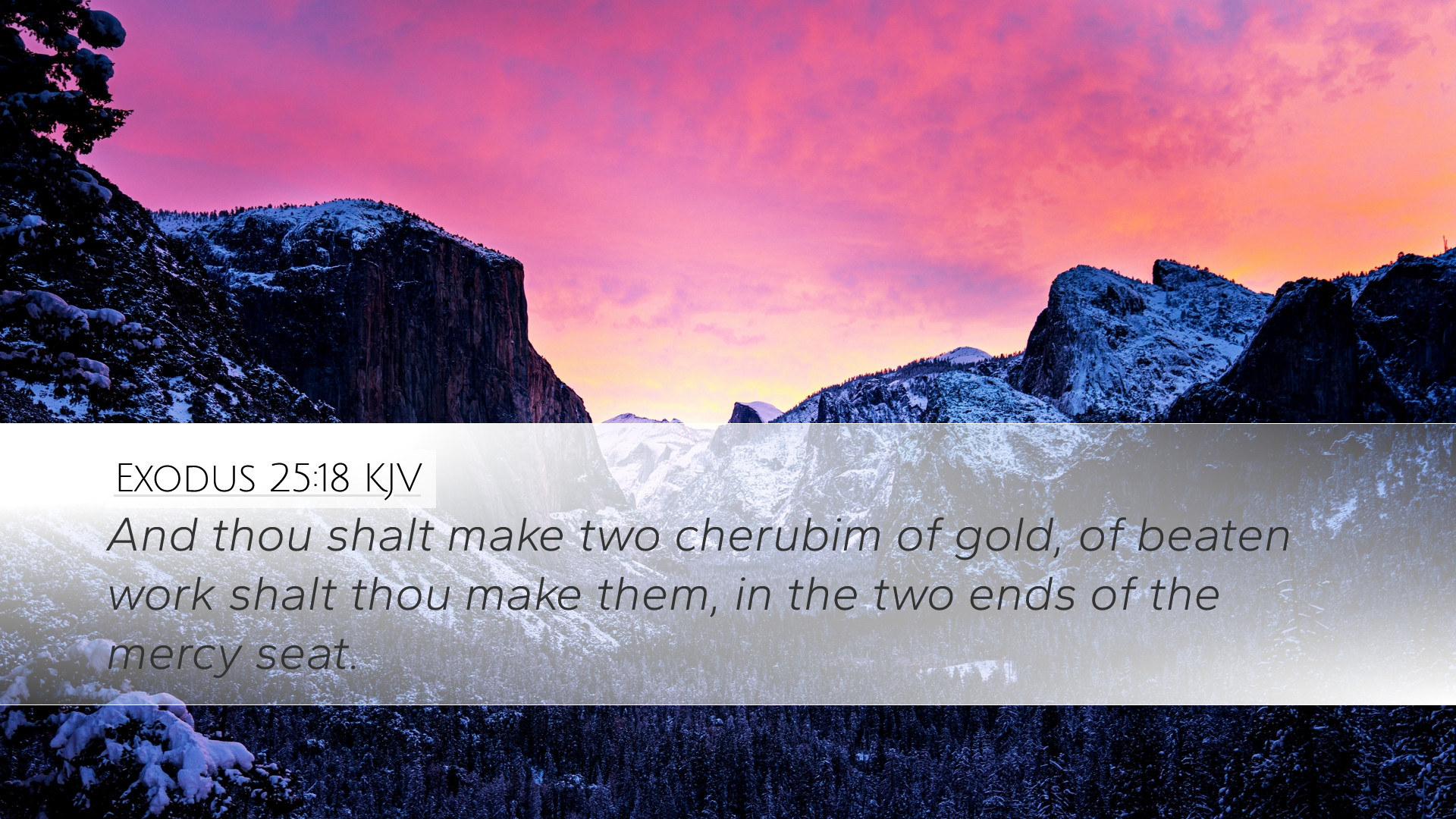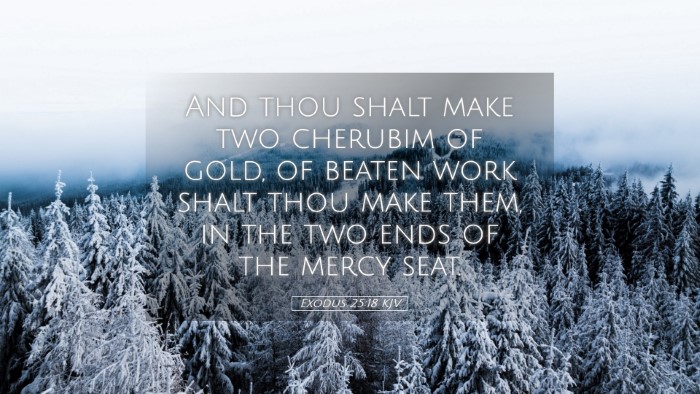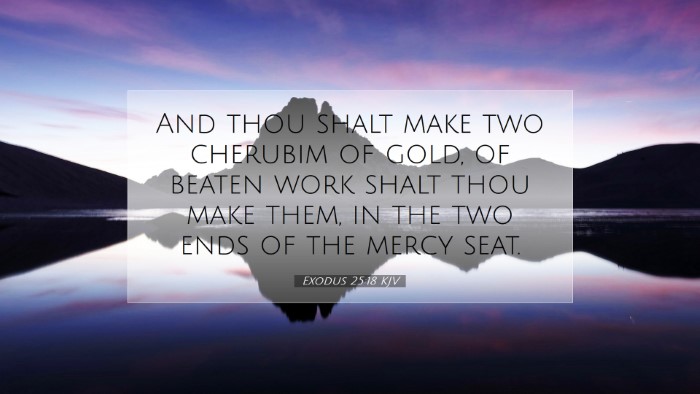Exodus 25:18 Commentary
Verse: "And you shall make two cherubim of gold; of hammered work shall you make them, on the two ends of the mercy seat."
Overview
This verse is part of God's detailed instructions regarding the furnishings of the tabernacle, particularly concerning the mercy seat that served as the lid for the Ark of the Covenant. The mention of the cherubim highlights the significance of angelic beings in the presence of God.
Cultural and Theological Significance
Matthew Henry notes that the cherubim were representatives of the divine presence and guardians of holiness. Their placement on the mercy seat symbolizes God's throne and the intersection of heavenly beings with earthly worship. The use of gold reflects the value and sanctity of what God desires in worship.
Commentary Insights
-
Matthew Henry
Henry emphasizes the intricate nature of the work. The phrase "hammered work" denotes the craftsmanship required, suggesting that worship and the things pertaining to it are not merely functional but require meticulous attention to beauty and detail. Henry also notes that cherubim imply protection and the capacity to worship, as they are often depicted as attendants to God's glory.
-
Albert Barnes
Barnes elaborates on the nature of the cherubs, indicating that their design was not merely ornamental but carried deep symbolic meaning. They are to reflect the archangels' position in Heaven, suggesting that man, through divine interaction, seeks to achieve a higher communion with God. Barnes also points out that such angelic representations were meant to remind the Israelites of God's holiness and omnipresence.
-
Adam Clarke
Clarke focuses on the spiritual implications of the cherubim. He interprets them as a reminder of the guardianship provided by God over the Ark of the Covenant, which represented His covenant with Israel. The two cherubim were aligned towards one another, suggesting the needed attitude of reverence and submission during worship. Clarke argues that the mercy seat, with cherubim on either side, foreshadows the grace extended to humankind through Christ, who is our mercy seat.
Symbolism of the Cherubim
The cherubim are rich in symbolism, embodying attributes of divine majesty, protection, and mediation. They are the splendid manifestations of God's power and holiness. The golden imagery reinforces the sacred nature of the items within the tabernacle and directs the worshiper's heart towards reverence.
The Mercy Seat as a Foreshadowing
The mercy seat itself is often seen as a prefiguration of Christ's atoning work. As noted by all commentators, it represents the place where God meets man. Under the New Covenant, this imagery is fulfilled in Christ, who is seated at the right hand of the Father, interceding for humanity. The act of making the cherubim, therefore, not only responds to immediate worship needs but also foreshadows the future revelation of God's redemptive plan through Jesus.
Practical Application for Worship
When studying this verse, pastors and theologians may reflect on the significance of worship preparation. The diligence shown in the creation of the cherubim and the mercy seat serves as a reminder that worship should be approached with reverence, creativity, and heartfelt worship, seeking not just to fulfill a requirement but to genuinely honor God.
Conclusion
This single verse in Exodus captures a moment in the broader narrative of God’s relationship with His people. The cherubim made of gold remind us of the balance between divine glory and grace. As we engage with this text, may we be inspired to reflect upon the grandeur of God and the intricate ways He draws near to those who seek Him.


